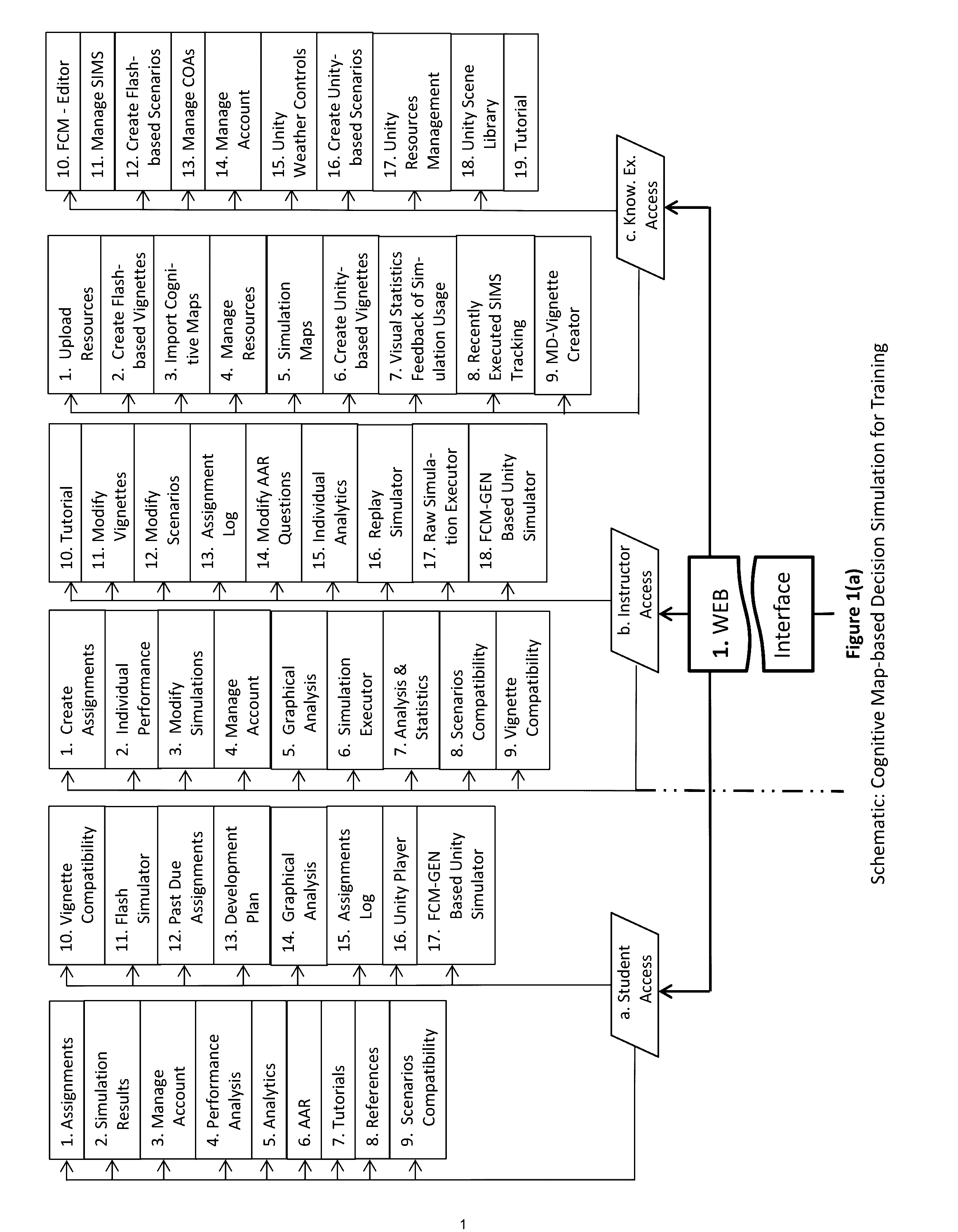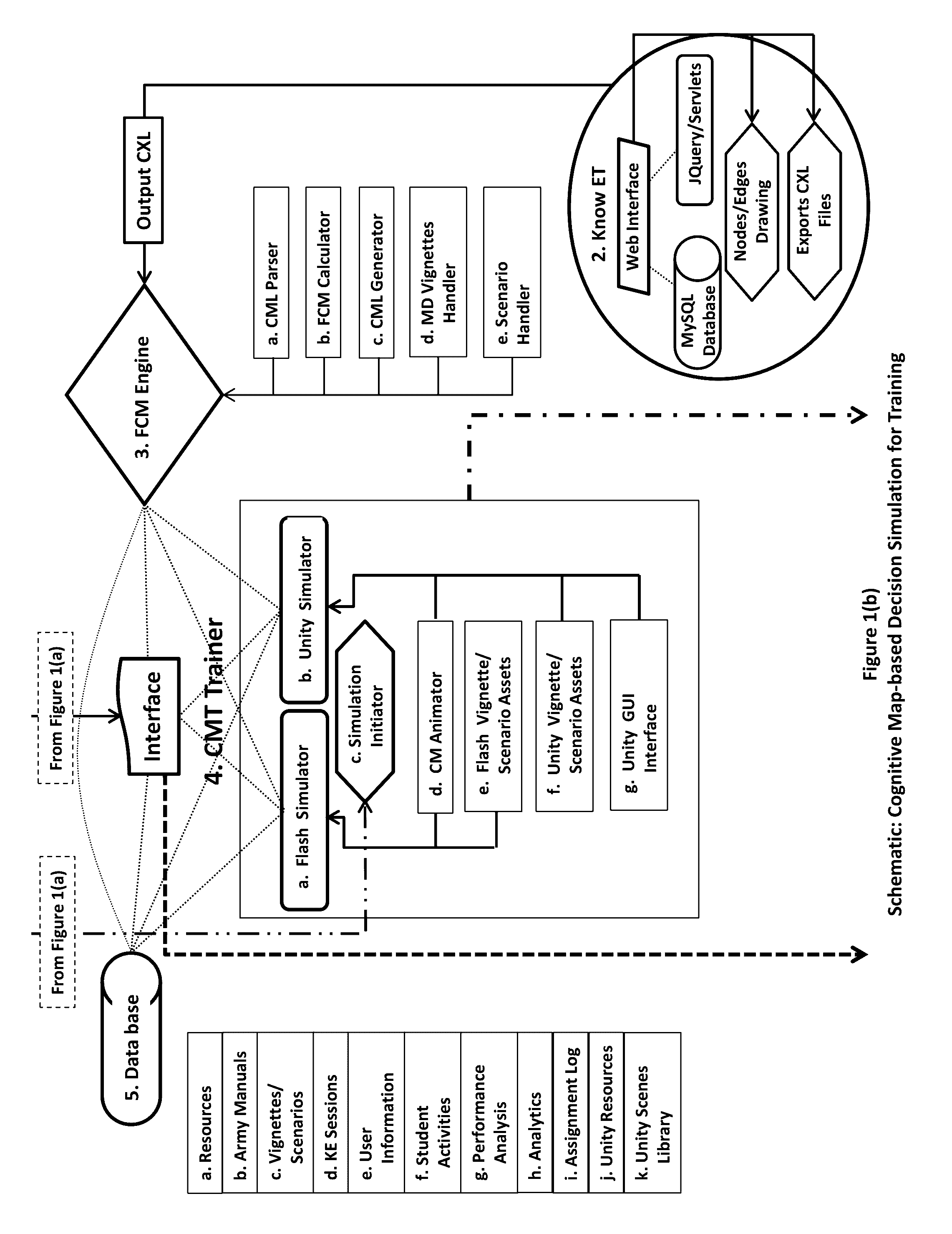Cognitive map-based decision simulation for training (CMDST)
a decision simulation and map technology, applied in knowledge representation, instruments, transportation and packaging, etc., can solve the problems of inability to use information from even the smallest maneuver unit, the infantry squad, and the inability to find information, so as to improve the decision quality and timeliness of individuals, improve the decision making competency of novice practitioners, and improve the effect of decision quality and timeliness
- Summary
- Abstract
- Description
- Claims
- Application Information
AI Technical Summary
Benefits of technology
Problems solved by technology
Method used
Image
Examples
example implementation
[0053
[0054]The present disclosure can be continually displayed on the systems shown in FIGS. 1 through FIG. 9. The present disclosure, as shown in the schematic at FIG. 1, consists of the following components:[0055](a) CMDST Utilities 1.[0056](b) Knowledge Elicitation Tool (KnowET) 2.[0057](c) Fuzzy Cognitive Map (FCM) Engine 3.[0058](d) Cognitive Map Based Trainer (CMTrainer) 4.[0059](e) MySQL Data Base 5.[0060](f) Fuzzy Cognitive Map (FCM) Generator 6.[0061](g) Fuzzy Cognitive Map 7[0062](h) Vignette (or Scenario) 8.
[0063]The CMDST Utilities 1 include all of the website functions and operations to enable student, instructor / trainer / commander, and knowledge engineer access to and use of the CMDST system. The subcomponents for student interface a with and use of the system include:[0064](1) Assignments a1. The ‘Assignments’ interface presents to the student a list of assignments made accessible by their instructor, as well as specific information for each individual assignment, incl...
PUM
 Login to View More
Login to View More Abstract
Description
Claims
Application Information
 Login to View More
Login to View More - R&D
- Intellectual Property
- Life Sciences
- Materials
- Tech Scout
- Unparalleled Data Quality
- Higher Quality Content
- 60% Fewer Hallucinations
Browse by: Latest US Patents, China's latest patents, Technical Efficacy Thesaurus, Application Domain, Technology Topic, Popular Technical Reports.
© 2025 PatSnap. All rights reserved.Legal|Privacy policy|Modern Slavery Act Transparency Statement|Sitemap|About US| Contact US: help@patsnap.com



